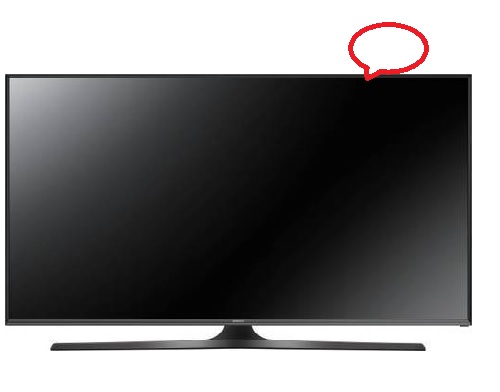If you’re a user of Razer peripherals, you know the importance of having the Razer Synapse app running smoothly on your Windows computer. Razer Synapse allows you to configure your Razer devices, customize RGB lighting, create macros, and manage various settings. However, like any software, it can encounter issues that prevent it from opening or functioning properly.
In this comprehensive troubleshooting guide, we will explore the most common problems users face with Razer Synapse and provide step-by-step solutions to get it up and running again. Whether you’re experiencing Synapse not opening, crashing, or not recognizing your peripherals, we’ve got you covered. Let’s dive in and fix those issues!
Understanding Razer Synapse and Its Importance
Before we dive into troubleshooting, let’s take a moment to understand what Razer Synapse is and why it’s crucial for managing your Razer peripherals. Razer Synapse is a powerful application that allows you to customize settings for all your Razer devices from one centralized hub. With Synapse, you can personalize your Chroma lighting, assign macros, and rebind keys with ease.
Common Issues with Razer Synapse
Razer Synapse, like any software, can encounter various issues that hinder its functionality. Here are some common problems users face with Razer Synapse:
- Razer Synapse not opening or launching on Windows.
- Razer Synapse failing to load profiles or switch between profiles.
- Razer Synapse not working in-game.
- Razer Synapse not functioning after a software update.
- Razer Synapse not downloading from the official website.
- Razer Synapse not detecting connected devices like mice and keyboards.
Now that we have an overview of the common issues, let’s move on to the troubleshooting steps.
Troubleshooting Steps for Razer Synapse Issues
Step 1: Force-Quit Razer Synapse Processes
Sometimes, Razer Synapse processes can crash or hang, preventing the application from running. To resolve this, we need to force-quit the processes and relaunch the program. Here’s how you can do it:
- Right-click the taskbar and select “Task Manager.”
- In the Task Manager window, switch to the “Details” tab.
- Locate any Razer Synapse processes, such as “Razer Central,” and select them.
- Click the “End task” button to force-quit the processes.
- Once all Razer processes are closed, try opening Razer Synapse again.
Step 2: Restart the Razer Synapse Service
Razer Synapse relies on a background service to run smoothly on Windows. Restarting this service can often resolve issues with Synapse not opening. Follow these steps:
- Press the Windows key + R to open the Run dialog.
- Type “services.msc” and press Enter to open the Services window.
- Scroll down and locate “Razer Synapse Service” in the list.
- Right-click on it and select “Restart.”
- After restarting the service, try launching Razer Synapse again.
Step 3: Reboot Your Computer
Performing a simple reboot of your computer can fix many underlying issues, including outdated system files or corrupted hardware driver caches. Here’s how to do it:
- Right-click the Start button and select “Power.”
- Click “Restart” to initiate a system reboot.
- Wait for your computer to restart completely.
- Once it’s back up, try opening Razer Synapse again.
Step 4: Run Razer Synapse as Administrator
Running Razer Synapse as an administrator can help resolve permission-related issues that may prevent the program from opening. Follow these steps:
- Find the Razer Synapse launcher (typically named RazerSynapse.exe) on your computer.
- Right-click on the launcher and select “Run as administrator.”
- If prompted by User Account Control (UAC), click “Yes” to grant administrative privileges.
- Check if Razer Synapse opens without any issues.
Step 5: Unplug and Reconnect Razer Peripherals
In some cases, Razer Synapse may not recognize your connected peripherals. To address this, unplug and reconnect your Razer devices. Here’s what you should do:
- Disconnect the USB cables of your Razer peripherals from your computer.
- Restart your computer.
- After the reboot, reconnect the Razer devices by plugging in their USB cables.
- If you have wireless Razer devices, turn them off and on again.
- For wireless devices with USB receivers, remove and reconnect the receivers.
Step 6: Update and Repair Razer Synapse
Outdated or corrupted versions of Razer Synapse can cause issues with the application. It’s essential to keep the software up to date and repair it if necessary. Follow these steps:
- Right-click the Start button and select “Apps and Features.”
- Scroll down and find “Razer Synapse” in the list of installed apps.
- Select “Modify” or “More” (in Windows 11) next to Razer Synapse.
- Follow the instructions to install any available updates.
- If updates don’t fix the issue, choose the “Repair” option to fix any corrupted files.
Step 7: Reinstall Razer Synapse
If the previous steps didn’t resolve the issue, reinstalling Razer Synapse may be necessary. Here’s how to do it:
- Open the “Apps and Features” settings as explained in Step 6.
- Locate “Razer Synapse” in the list and select it.
- Click “Uninstall” and follow the prompts to remove the application.
- Restart your computer.
- Visit the official Razer website and download the latest version of Razer Synapse.
- Run the installer and follow the on-screen instructions to reinstall the application.
Step 8: Uninstall Razer Surround Sound
Razer Surround Sound, an optional application for enhancing Razer headset capabilities, can sometimes conflict with Razer Synapse. If you have this application installed, consider uninstalling it. Here’s how:
- Open the “Apps and Features” settings as explained in Step 6.
- Find “Razer Surround” in the list of installed apps.
- Select it and click “Uninstall.”
- If you want to continue using Razer Surround Sound, reinstall the latest version from the official website after uninstalling.
Step 9: Reinstall Razer Device Drivers
Corrupted or outdated Razer device drivers can cause issues with Razer Synapse. Reinstalling the drivers can help resolve these problems. Follow these steps:
- Press the Windows key + R to open the Run dialog.
- Type “devmgmt.msc” and press Enter to open the Device Manager.
- Expand categories like “Human Interface Devices” and “Mice and other pointing devices.”
- Right-click on each Razer driver and select “Uninstall device.”
- Restart your computer. Windows will reinstall basic drivers during startup.
- Visit the Razer Support Center Downloads page to download and install the latest drivers for your Razer peripherals.
Step 10: Update Windows to Its Latest Version
Keeping your Windows operating system up to date is crucial for the smooth functioning of Razer Synapse. Follow these steps to update your Windows:
- Open the Settings app by clicking the Start button and selecting “Settings.”
- Click “Windows Update” in the settings menu.
- Select “Check for updates” to scan for available updates.
- If any updates are found, click “Download and install” to install them.
- Additionally, check for optional hardware driver updates by selecting “Advanced options” and then “Optional updates.”
Step 11: Repair the Microsoft .NET Framework
A faulty Microsoft .NET Framework installation can also cause issues with Razer Synapse. You can use the Microsoft .NET Framework Repair Tool to fix this problem. Follow these steps:
- Download the Microsoft .NET Framework Repair Tool from the official Microsoft website.
- Run the downloaded tool and follow the on-screen instructions to repair the .NET Framework installation.
Step 12: Add Razer Synapse to Your Antivirus Software
Sometimes, third-party antivirus programs can interfere with Razer Synapse’s functionality. Adding Razer Synapse as an exception to your antivirus software can help resolve this issue. Here’s how:
- Open your antivirus software and locate the settings or preferences.
- Look for options related to program exceptions or exclusions.
- Add the Razer Synapse executable file (e.g., “Razer Synapse 3.exe”) to the list of exceptions.
- Save the changes and restart your computer.
Conclusion
Congratulations! You’ve successfully troubleshooted and resolved common issues with Razer Synapse. By following the steps outlined in this guide, you should now be able to open Razer Synapse, customize your Razer peripherals, and enjoy a seamless gaming experience.
If you encounter any further issues or have additional questions, don’t hesitate to reach out to Razer Support for further assistance. Remember to keep your Razer Synapse and drivers up to date to ensure optimal performance.
Happy gaming with your Razer peripherals!








